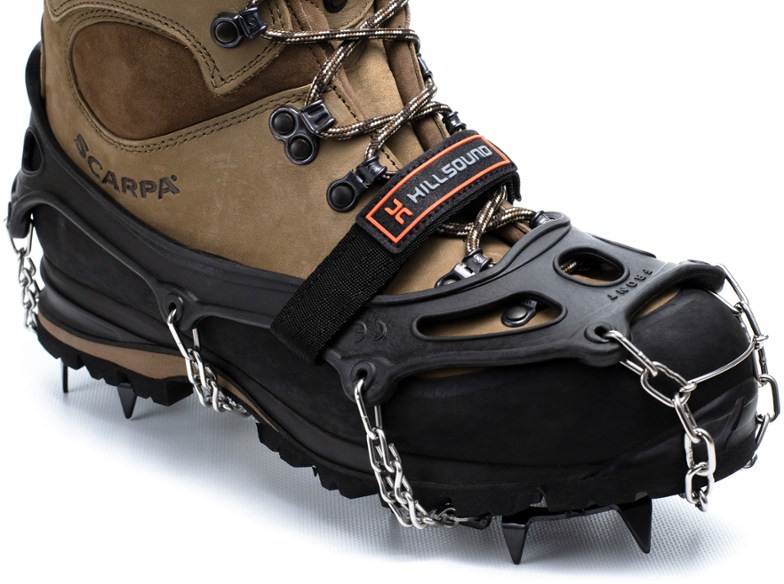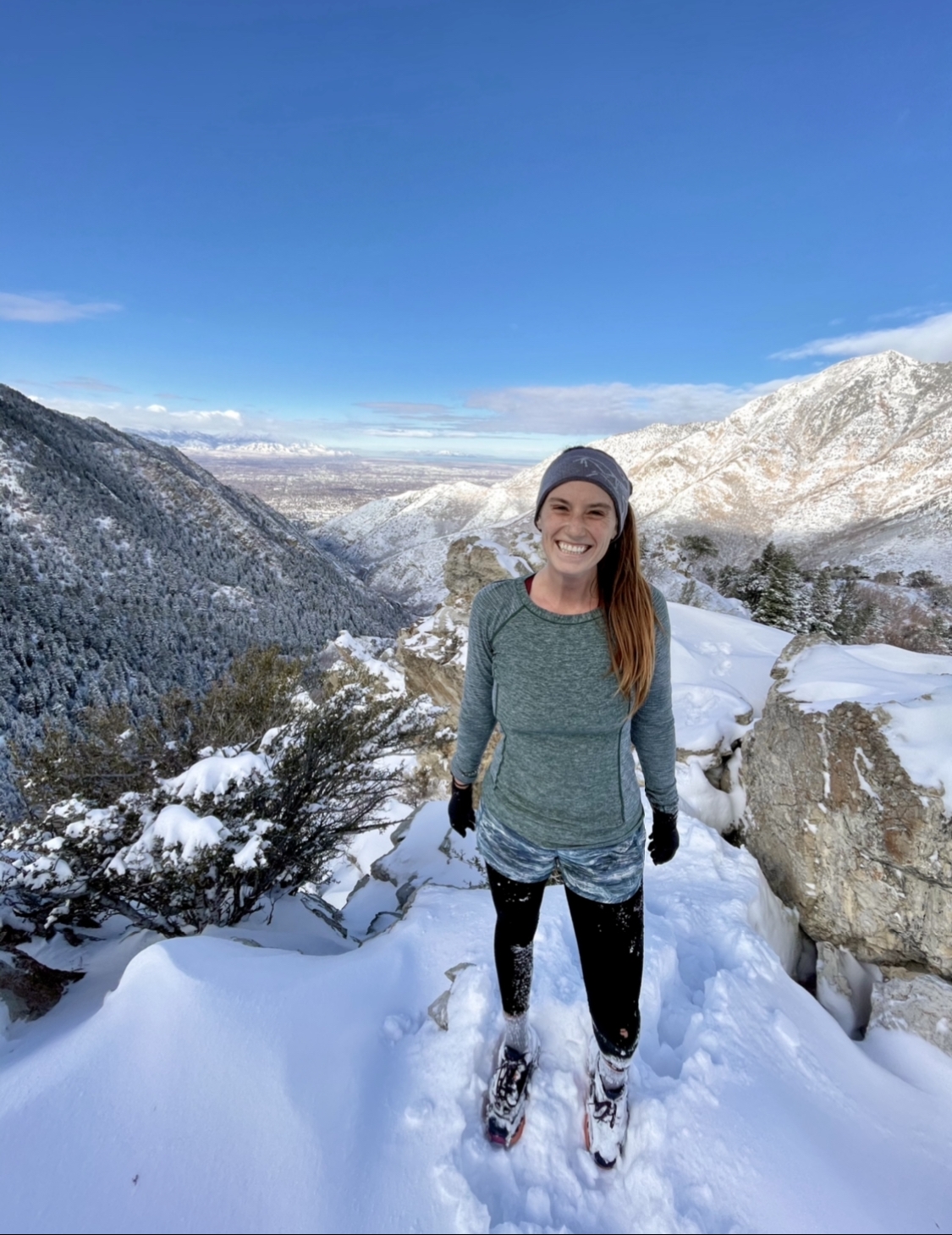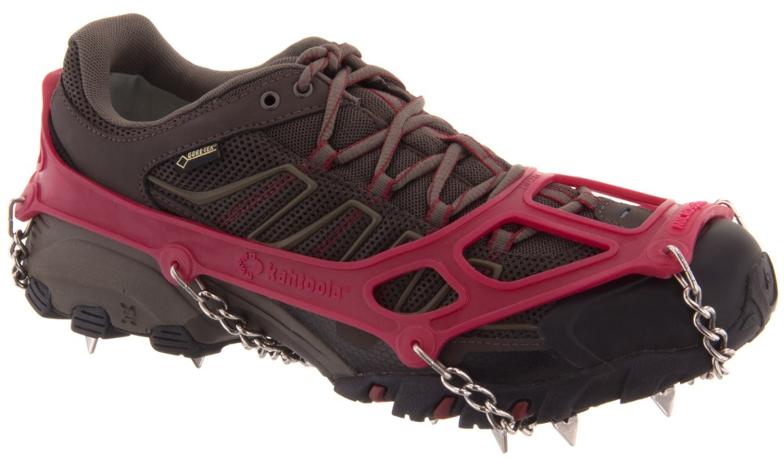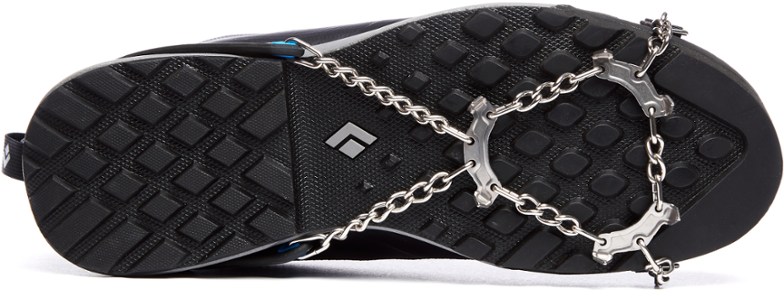Best Microspikes and Crampons for Thru-Hiking
Snow is fun, magical, challenging, and dangerous. Many thru-hikers may encounter their first winter snow/ice conditions while on the trail. Traction for snow is NOT something you want to purchase while out on the trail, after your first encounter.
It’s imperative to research which sections of your trail may have snow, and have a plan set. Slipping onto your butt on ice is no fun, and the consequences can be much worse than just a bruise. Traction devices keep hikers stable in slippery conditions while also allowing you to hike up steeper grades in snow without fear of slipping.
Now that I’ve lectured you on how important it is to carry spikes (when necessary), let’s dive into how to choose. There’s a ton of different traction devices on the market, with varying weights, sizes, and features. Each product is going to work in a slightly different way that’s better suited to a particular adventure. Here’s a shortlist of the best microspikes and crampons for thru-hikers.
The 5 Best Microspikes and Crampons for Thru-Hiking
Best for Variety / All-Around Use
The majority of thru-hikers will fall into this category. For example, PCT NOBO hikers on a mid to high snow year will definitely need spikes of this weight in the Sierra. These two options feature enough traction to keep you safe with significant amounts of snow, without hindering your ability to still move quickly. However, with their weight approaching a pound, they’re definitely an item you’ll want to mail between sections as needed. Paired with an ice axe, spikes of this weight can be used for all but very technical mountaineering.
Hillsound Trail Crampons

Best microspikes and crampons for thru-hiking: Hillsound Trail Crampons. Note: these can be worn with lighter boots or running shoes as well. Photo via Hillsound.
- MSRP: $69.00
- Weight: 15.7 oz
- Materials: Carbon steel spikes / stainless-steel chain / elastomer harness
The Hillsound Trail Crampons are designed for traction in a variety of winter conditions, without sacrificing comfort. They heat-treat their carbon steel spikes to increase their durability, so with good care, they will last for years. There is also a strap that fastens across the top of your boots or trail runners to keep the spikes from sliding or popping off in deep snow/powder.
While these spikes are great for very heavy snow, steep grades, and glacial terrain, they are heavier than any of the other options besides technical crampons. Additionally, in just ice and light snow, the higher profile spikes may decrease ankle stability and cause rolling without caution.
Kahtoola MICROspikes
- MSRP: $69.95
- Weight: 11 oz
- Materials: Elastomer/stainless steel
The classic Kahtoola MICROspikes are a thru-hiker, winter summit bagger, and trail runner favorite. They feature 12 3/8 inch stainless steel spikes on each foot, as well as steel chains to prevent snow from balling up underfoot. Kahtoola updated their elastomer harness to reduce weight in this version of their most popular spikes. These are lighter than the Hillsound Trail Crampons. However, they lack a top strap across the feet which helps with stability.
READ NEXT – Should You Start the Appalachian Trail in Winter?
Best for Minimal Use / Ice and Light Snow
Hikers who only expect to encounter occasional snow and ice can get away with an ultralight spike. For example, one of these options would be perfect for hiking on the Appalachian Trail in the early season and mild icy conditions. Additionally, more minimal spikes are actually better for mixed conditions. Larger spikes become damaged when hiking through ice, mud, rocks, and slush without taking them off to avoid rocks. Though neither of these options will perform well in deep snow or extremely steep conditions, you’ll find more stability in ice and light snow with a lower profile spike.
Kahtoola NANOspikes
- MSRP: $49.95
- Weight: 8 oz
- Materials: Elastomer / tungsten
These low-profile spikes shine when conditions are slippery. They’ll work in icy sections, light snow, mixed mud and ice, or any combination of these. The spikes are only 1/5 of an inch, so they hardly lift you off the ground. However, 10 spikes on each foot offer protection on both the back and front of the feet. A shock-absorbing cleat pad surrounds the spikes, making these a great option for trail running or quick hiking. Though these are lighter and lower profile than Kahtoola’s MICROspikes, they still weigh in at half a pound.
Black Diamond Blitz Spike
- MSRP: $39.95
- Weight: 3.2 oz
- Materials: Elastomer / stainless steel
Fast and light hikers expecting to encounter spotty icy/mixed conditions, these spikes are for you. The Black Diamond Blitz Spikes feature six eight-mm spikes on only the forefoot. This gives hikers traction on icy and slippery surfaces with full stability intact. Additionally, this design allows hikers to move through ice and rocks without taking spikes on and off between each section in order to preserve their product. Though these are not a sufficient option for serious snow travel, the Blitz Spikes are an ultralight option that can easily be carried during an entire thru-hike.
READ NEXT – 10 Accessories Under $100 to Winterize Your Backpacking Setup
Best for Winter Thru-Hikes / Mountaineering and Heavy Snow
Though many people refer to micro-spikes as “crampons,” true mountaineering crampons are entirely different. Crampons are typically used only with mountaineering boots and taken to steep, technical mountains covered in snow or ice. They cannot be used to travel on flat ice or mixed conditions, as the spikes are too large to provide your ankle any stability.
True crampons come into play for winter thru-hikes, technical mountaineering, or early/late season snow conditions. The minimal hiking crampons I’ve featured below are about as light as you can get for this level of protection.
Kahtoola KTS Steel Crampons
- MSRP: $169.95
- Weight: 23 oz
- Materials: 4130 Chromoly steel
These innovative crampons allow hikers to hike up tough grades in heavy snow and ice without full mountaineering boots. Ten one-inch steel spikes are designed to dig into heavy snow and help with both steeper grades and the deepest snow. Furthermore, at 1.5 pounds, they’re much lighter than many other crampons and pack down small as well.
The downside to these is that you will not be able to use them in light snow or ice. The one-inch spikes elevate your feet off flat ground, and without heavy snow, it feels like you’re on stilts. For a winter expedition where there may be some light mountaineering as well as mixed conditions, it may be worth it to consider pairing these with an ultralight spike as well. And, of course, an ice axe.
There’s no need to worry about snow travel if you’re well prepared. Though there may not appear to be any large difference between these traction devices, selecting the right one for your adventure is crucial. By comparing the profile of each spike, as well as their weight, it’s easy to see which one best suits your needs.
More of the Best Thru-Hiking Gear
- Best Trail Runners for Thru-Hiking
- Best Backpacking Packs
- Best Backpacking Tents
- Best Down Jackets for Backpacking
Featured image via Chris Helm (@chris.helm).
This website contains affiliate links, which means The Trek may receive a percentage of any product or service you purchase using the links in the articles or advertisements. The buyer pays the same price as they would otherwise, and your purchase helps to support The Trek's ongoing goal to serve you quality backpacking advice and information. Thanks for your support!
To learn more, please visit the About This Site page.






